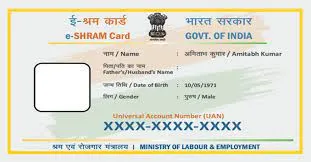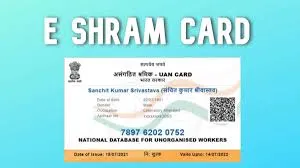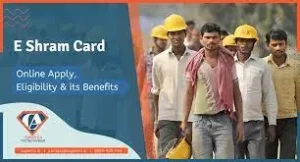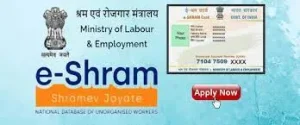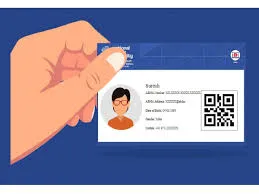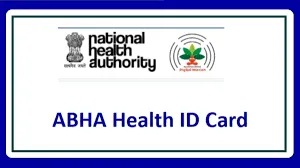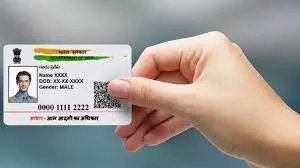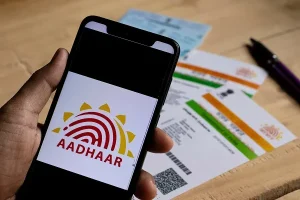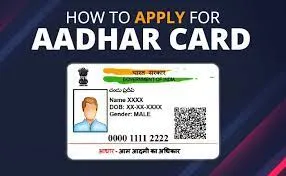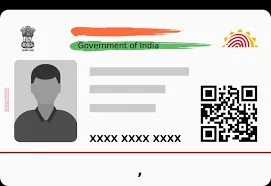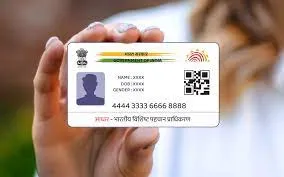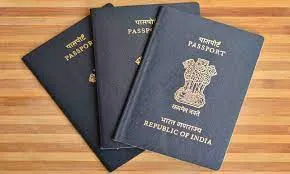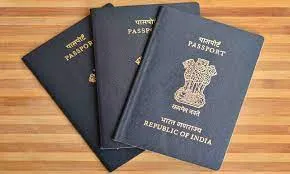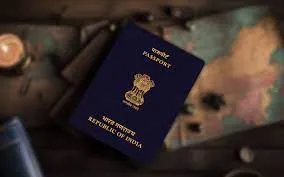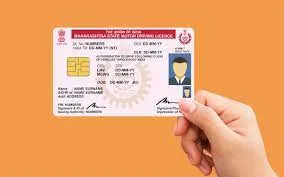New Pan Card Apply Introduction:
Applying for a new Permanent Account Number (PAN) card is a significant step in ensuring financial compliance and identity verification in India. Whether you’re a newly employed individual, a business owner, or a taxpayer, obtaining a PAN card is essential for various financial transactions and tax-related activities. In this comprehensive guide, we’ll walk you through the process of Applying for a New Pan Card , including eligibility criteria, required documents, application methods, online vs. offline options, frequently asked questions, and tips for a smooth application experience.
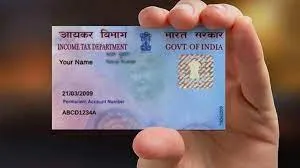
Understanding the Importance of a New PAN Card Apply
A Permanent Account Number (PAN) is a unique alphanumeric identifier issued by the Income Tax Department of India to individuals, firms, and entities for tracking financial transactions and ensuring tax compliance. Here are some key reasons why obtaining a PAN card is important:
Tax Identification
A PAN card serves as a primary identification document for filing income tax returns and conducting various financial transactions, including opening bank accounts, investing in securities, buying property, and more.
Financial Transactions
A PAN card is required for conducting high-value financial transactions such as purchasing or selling immovable property, opening a demat account, investing in mutual funds or stocks, and making cash deposits or withdrawals exceeding specified limits.
Government Subsidies
A PAN card is necessary for availing government subsidies, benefits, and services, including LPG subsidies, scholarships, pensions, and welfare schemes.
International Transactions
For individuals engaged in international transactions or investments, a PAN card is essential for complying with foreign exchange regulations and reporting income earned abroad.
Eligibility Criteria for Applying for a New PAN Card
To Apply for a New Pan Card, individuals must meet the following eligibility criteria:
1.Indian Residents:
Indian citizens residing in India are eligible to apply for a new Pan card.
2.Foreign Nationals:
Foreign nationals residing in India are also eligible to apply for a PAN card if they engage in economic or financial activities that require PAN.
3.Non-Resident Indians (NRIs):
NRIs are eligible to apply for a new PAN card if they have taxable income in India or engage in financial transactions that require PAN.

Documents Required for Applying for a New PAN Card
When Applying for a New Pan card, applicants must submit the following documents:
- Proof of Identity: Aadhaar card, passport, voter ID, driving license, or any other government-issued photo ID.
- Proof of Address: Aadhaar card, voter ID, passport, utility bill, bank statement, or any other document containing the applicant’s address.
- Proof of Date of Birth: Birth certificate, passport, school leaving certificate, or any other document containing the applicant’s date of birth.
- Photograph: Recent passport-size color photograph of the applicant.
Methods of Applying for a New PAN Card
There are two primary methods for Applying for a New PAN Card: online and offline.
Online Application:
Applying for a New Pan Card online is the most convenient and streamlined option. The process involves visiting the official websites of the National Securities Depository Limited (NSDL) or UTI Infrastructure Technology and Services Limited (UTITSL) and filling out the online application form. Applicants must upload scanned copies of the required documents and make the necessary payment online. Once submitted, the application is processed, and the PAN card is delivered to the applicant’s address.
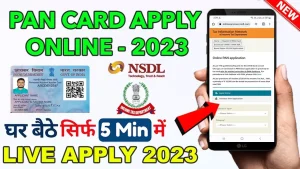
Offline Application:
Applying for a New Pan Card offline involves obtaining a PAN application form (Form 49A) from authorized PAN service centre’s or designated post offices. Applicants must fill out the form manually, attach photocopies of the required documents, and submit the application along with the prescribed fee. The application is then processed, and the PAN card is dispatched to the applicant’s address.
Step-by-Step Guide to Applying for a New PAN Card Online

Step 1: Visit the NSDL or UTITSL Website
Go to the official website of the National Securities Depository Limited (NSDL) or UTI Infrastructure Technology and Services Limited (UTITSL), the authorized agencies for processing PAN applications.
Step 2: Select the PAN Application Form
Choose the appropriate PAN application form based on your residency status and purpose of application (e.g., individual, company, partnership firm, etc.).
Step 3: Fill Out the Online Form
Carefully fill out the online PAN application form with accurate personal and contact details, including name, date of birth, address, contact number, and email ID.
Step 4: Upload Supporting Documents
Upload scanned copies of supporting documents such as proof of identity, proof of address, and proof of date of birth as specified in the application form.
Step 5: Pay the Application Fee
Pay the applicable PAN application fee online using debit/credit cards, net banking, or other available payment methods. The fee varies depending on the mode of delivery and applicant’s residency status.
Step 6: Submit the Application
Review the completed application form for accuracy and completeness before submitting it online. Once submitted, you will receive an acknowledgment number for tracking the status of your application.
Step 7: Verify Aadhaar Details (Optional)
If you have an Aadhaar card, you can choose to verify your details through Aadhaar-based e-KYC authentication for faster processing of your PAN application.
Step 8: Wait for Processing
After submission, your PAN application will be processed by the authorities. You can track the status of your application online using the acknowledgment number provided.
Step 9: Receive PAN Card
Once processed, your PAN card will be dispatched to the address provided in the application form. You can expect to receive it within a few days via postal mail.
Applying for a New PAN Card: Correction
The Permanent Account Number (PAN) card is a crucial document issued by the Income Tax Department of India, serving as a unique identifier for taxpayers. However, there may be instances where individuals need to make corrections or updates to their existing PAN card details due to errors or changes in personal information. In this article, we will discuss the process of Applying for a New PAN Card for correction purposes.
Reasons for Correction in PAN Card:
There are several reasons why individuals may need to apply for a new PAN card for correction:
Correction of Personal Details: Errors or discrepancies in personal details such as name, date of birth, or address on the existing PAN card may necessitate correction.
Updating Contact Information: Changes in contact details such as mobile number or email address may require updating on the PAN card.
Rectifying Errors: If there are spelling mistakes, incorrect information, or typographical errors in the existing PAN card, individuals may need to apply for a new PAN card with the corrected details.

Frequently Asked Questions (FAQs) About Applying for a New PAN Card
1. What is a PAN card, and why is it necessary?
- A PAN card is a unique alphanumeric identifier issued by the Income Tax Department of India. It is necessary for various financial transactions, including filing income tax returns, opening bank accounts, and conducting high-value transactions.
2. Who is eligible to apply for a new PAN card?
- Any individual who does not already possess a PAN card or requires a new one due to changes in personal information such as name, address, or date of birth is eligible to apply.
3. How can I apply for a new PAN card?
- You can apply for a new PAN card online through the official websites of the National Securities Depository Limited (NSDL) or UTI Infrastructure Technology and Services Limited (UTIITSL).
4. What is the application process for a new PAN card?
- The application process involves filling out the online application form, uploading necessary documents, paying the application fee, submitting the form, and tracking the application status.
5. What documents are required for applying for a new PAN card?
- The documents required include proof of identity, proof of address, proof of date of birth, and a recent passport-size photograph.
6. Can foreign citizens apply for a PAN card?
- Yes, foreign citizens who conduct business or financial transactions in India can apply for a PAN card using Form 49AA.
7. Is there an age limit for applying for a PAN card?
- No, there is no age limit for applying for a PAN card. Individuals of all age groups can apply.
8. How long does it take to receive the new PAN card after applying?
- Upon successful verification of the application and documents, the PAN card is typically dispatched within 15 to 20 working days.
9. Can I track the status of my PAN card application?
- Yes, you can track the status of your PAN card application online using the 15-digit acknowledgment number provided upon submission.
10. Is it mandatory to link Aadhaar with PAN card?
- Yes, it is mandatory to link Aadhaar with PAN card for income tax purposes and other financial transactions.
11. What happens if there are errors in my PAN card details?
- You can apply for a new PAN card with corrected details by filling out the relevant form and providing supporting documents.
12. Can I update my address on my existing PAN card?
- Yes, you can update your address on your existing PAN card by filling out the PAN card correction form and submitting it along with supporting documents.
13. Can I apply for a PAN card on behalf of a minor?
- Yes, parents or guardians can apply for a PAN card on behalf of a minor child by providing their details and relationship proof.
14. Can I apply for a PAN card if I am an NRI?
- Yes, non-resident Indians (NRIs) can apply for a PAN card using the same application process as residents.
15. Can I apply for a new PAN card if my old one is lost or damaged?
- Yes, you can apply for a new PAN card if your old one is lost, stolen, or damaged beyond use.
16. Can I apply for a PAN card if I don’t have a permanent address?
- Yes, you can provide an address for communication purposes while applying for a PAN card, even if it is not a permanent address.
17. Can I apply for a PAN card if I am unemployed?
- Yes, individuals who are unemployed but engage in financial transactions or require a PAN card for identification purposes can apply.
18. Can I apply for a PAN card if I am retired?
- Yes, retired individuals can apply for a PAN card if they engage in financial transactions or require it for identification purposes.
19. Can I apply for a PAN card if I am a student?
- Yes, students who engage in financial transactions or require a PAN card for educational purposes can apply.
20. Can I apply for a PAN card if I am self-employed?
- Yes, self-employed individuals can and often need to apply for a PAN card for tax and business purposes.
21. Can I apply for a PAN card if I am a housewife?
- Yes, housewives who engage in financial transactions or require a PAN card for identification purposes can apply.
22. Can I apply for a PAN card if I am a freelancer or consultant?
- Yes, freelancers, consultants, and individuals engaged in freelance work can apply for a PAN card for tax and business purposes.
23. Can I apply for a PAN card if I am a sole proprietor?
- Yes, sole proprietors running their own businesses can and often need to apply for a PAN card for tax and business purposes.
24. Can I apply for a PAN card if I am a partner in a partnership firm?
- Yes, partners in partnership firms can apply for a PAN card for tax and business purposes.
25. Can I apply for a PAN card if I am a director of a company?
- Yes, directors of companies can apply for a PAN card for tax and business purposes.
26. Can I apply for a PAN card if I am a trustee of a trust?
- Yes, trustees of trusts can apply for a PAN card for tax and legal purposes related to the trust.
27. Can I apply for a PAN card if I am an investor in securities or mutual funds?
- Yes, investors in securities or mutual funds can and often need to apply for a PAN card for tax and investment purposes.
28. Can I apply for a PAN card if I am a senior citizen?
- Yes, senior citizens can apply for a PAN card following the same application process as other applicants.
29. Can I apply for a PAN card if I have recently got married and changed my name?
- Yes, individuals who have changed their name due to marriage or any







